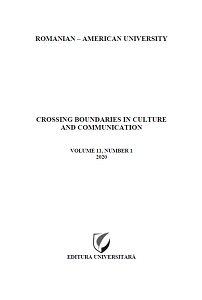Deep culture-rooted stereotypes: a contrastive study of Romanian and
Spanish cultures through ethnic-referring expressions
Deep culture-rooted stereotypes: a contrastive study of Romanian and Spanish cultures through ethnic-referring expressions
Author(s): Victor-Emanuel CiuciucSubject(s): Language studies, Language and Literature Studies, Foreign languages learning, Applied Linguistics, Language acquisition, Sociolinguistics, Cognitive linguistics, Philology
Published by: Editura Pro Universitaria
Keywords: Deep-culture; stereotypes; pragmatics; ethnic-referring expressions; language and culture;
Summary/Abstract: The contrasts that sometimes exist between what is said literally and what is really meant, the adequacy of the sequences, as well as the adjustment of grammatical constructions to the context and the situation, or the adequate selection of the referent as a previous step for achieving full comprehension of the statements are three types of phenomena that elude a precise characterization in purely grammatical terms. Escandell Vidal (2013) emphasizes the importance of extra-linguistic factors that condition the effective use of language, including this characteristic in the definition of pragmatics that encompasses, in her opinion, "the considerations that determine both the use of a specific statement by a specific speaker in a specific communicative situation, such as its interpretation by the addressee " (Escandell Vidal 2013: 15). However, the fact that the relationship between language and reality is not straightforward (and subsequently, that language is not mere nomenclature) is apparent in the lack of lexical-grammatical correspondence between different languages– a phenomenon observable in different instances of language contact, including interlingual translation and language learning. Moreover, the same stimulus from reality is “interpreted” and rendered differently by different languages. Therefore, our analysis is a descriptive one, which will focus especially on the extra linguistic situation, in order to provide context, the register of use, the meaning, the communicative function, the use restrictions and examples of use. Altogether, all these pieces of information will help us contour the image that the analysed expressions depict. In order to do so, the following steps have been followed: selection of the ethnic-referring expressions; data compilation and the need of establishing a frequency of use for each expression, in order to identify the most frequently-used stereotypes; reference to the definition proposed by the dictionaries (and if considered relevant or/and available, the etymological data); reference to sociological and/or cultural data, when needed.
Journal: Crossing Boundaries in Culture and Communication
- Issue Year: 11/2020
- Issue No: 1
- Page Range: 88-126
- Page Count: 38
- Language: English

